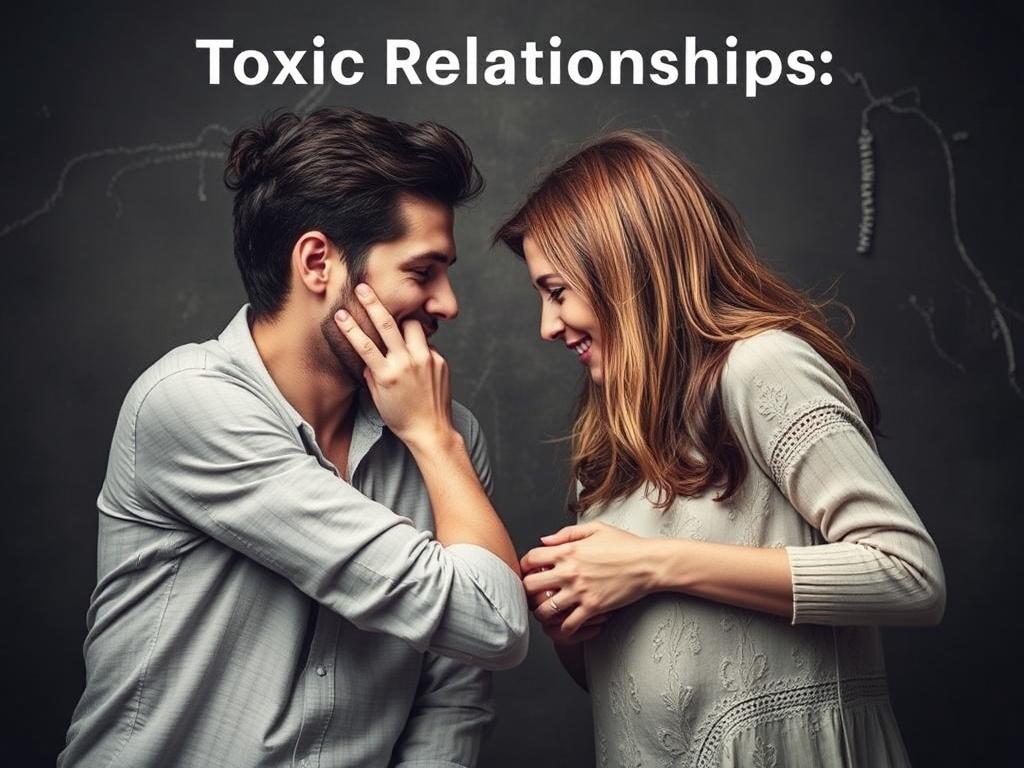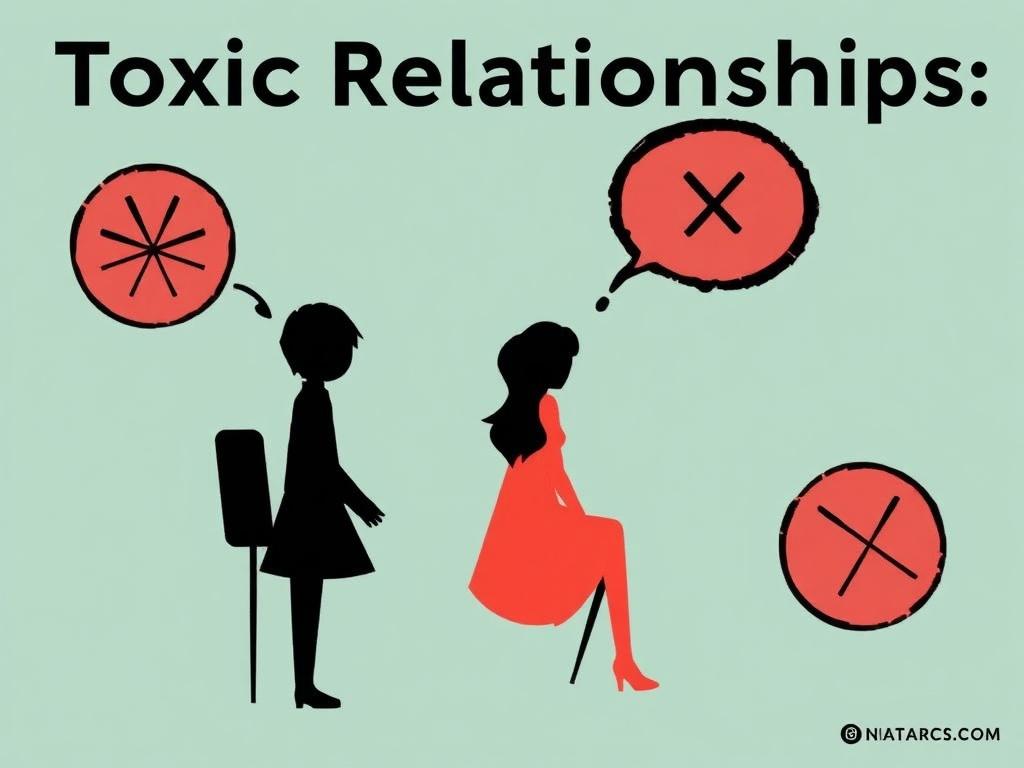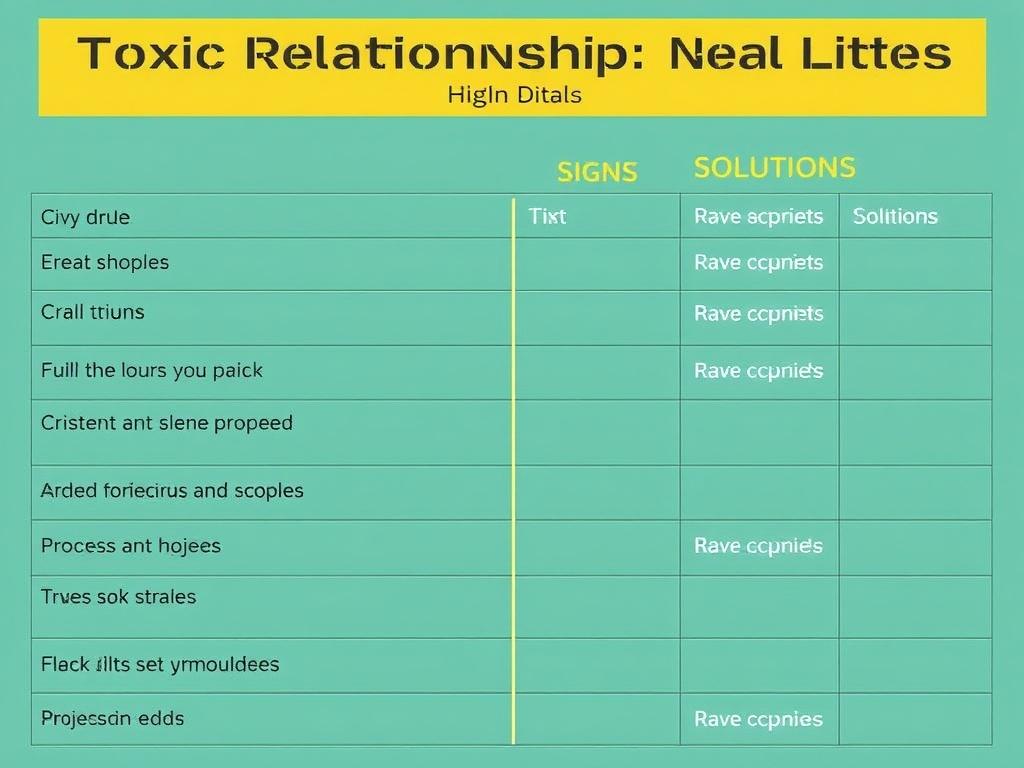Understanding Toxic Relationships
Toxic relationships are more common than many realize, often creeping into our lives without us fully noticing the damage they cause. These relationships can be with romantic partners, friends, family members, or even co-workers. At their core, toxic relationships drain your energy, diminish your self-worth, and create constant stress or unhappiness. Understanding what’s truly toxic about a relationship isn’t always straightforward, as emotional ties and history complicate how we perceive these interactions.
Toxic relationships are not about occasional disagreements or conflicts, but patterns of behavior that consistently bring harm. They often leave someone feeling hurt, confused, or disrespected, making it difficult to heal and grow. Recognizing the signs and learning about effective solutions can be the first step toward reclaiming your well-being and creating healthier connections.
Signs of Toxic Relationships
Recognizing toxic relationships early helps you guard against long-term emotional damage. Here are some common signs that a relationship might be toxic:
- Constant criticism or belittling: When one partner frequently puts the other down or makes them feel inferior.
- Lack of support: When encouragement and empathy are missing, and one feels isolated in their struggles.
- Dishonesty and distrust: Lies and secrecy create a foundation where trust cannot thrive.
- Manipulation and control: When one person tries to control the other’s actions, decisions, or feelings.
- Excessive jealousy or possessiveness: Overbearing suspicion that leads to limiting social life or independence.
- Constant drama and negativity: When interactions are filled with arguments, mood swings, or emotional volatility.
- Feeling drained or anxious: When the relationship feels exhausting rather than uplifting.
Emotional and Physical Abuse: A Red Flag
Beyond unhealthy patterns, toxic relationships can involve emotional or physical abuse. Emotional abuse can be subtle, like manipulative behavior or persistent put-downs, while physical abuse is direct harm through violence. Both types of abuse are serious indicators that professional help and possibly removal from the relationship are necessary.
Why Do We Stay in Toxic Relationships?

It’s often puzzling why someone would stay in a toxic relationship despite the pain it causes. There are many complex reasons grounded in human psychology, emotions, and social influences:
- Fear of being alone: Many fear loneliness more than the discomfort in an unhealthy relationship.
- Low self-esteem: Sometimes people feel they don’t deserve better treatment.
- Hope for change: Belief that the toxic partner will improve can keep someone holding on.
- Financial or social dependency: Leaving a relationship can feel hard or impossible due to practical limitations.
- Emotional investment: Long history, shared memories, or children can complicate decisions.
Understanding these reasons is key to finding compassion for oneself or others who may be trapped in toxic dynamics.
Common Types of Toxic Relationships
Not all toxic relationships fit a single mold. They vary based on the people involved and the situation. Here are some common types:
| Type of Relationship | Characteristics | Examples |
|---|---|---|
| Romantic Partner | Jealousy, control issues, lack of respect, emotional or physical abuse | Constant arguments, spying on partner, emotional neglect |
| Friendship | One-sided support, manipulation, using guilt to control | Friend rarely available for you but expects your help all the time |
| Family | Criticism, favoritism, lack of boundaries, enabling bad behavior | Family member constantly dismisses your feelings or invades privacy |
| Workplace | Bullying, unfair criticism, exclusion, excessive demands | Boss undermines your work or coworkers isolate you socially |
This table highlights how toxic behaviors can manifest in different relationship settings, but the emotional toll remains significant regardless of who is involved.
Solutions for Toxic Relationships
Once you recognize that you’re in a toxic relationship, the next step is working toward solutions that protect your mental and emotional health. Here are practical steps and strategies:
Set Clear Boundaries
Establishing boundaries can help protect your space and emotions. This might mean limiting contact, refusing to engage in arguments, or clearly stating what behaviors you will not tolerate. Boundaries are your right in any relationship and must be respected to maintain balance.
Open and Honest Communication
Sometimes toxic patterns arise because of misunderstandings or unmet needs. When safe, try expressing your feelings clearly and calmly. Use “I” statements like “I feel hurt when…” to avoid blame and invite dialogue. However, don’t expect immediate changes—communication is a process.
Seek Support Outside the Relationship
Confiding in trusted friends, family members, or mental health professionals can provide perspective and emotional relief. Support networks help you feel less isolated and give advice or resources you might not have considered.
Focus on Self-Care
Taking care of your physical and emotional well-being builds resilience. Good sleep, balanced nutrition, exercise, and activities that bring joy and relaxation contribute to feeling stronger and less entangled in toxicity.
Evaluate the Relationship’s Future
It’s important to recognize when a relationship is unlikely to improve despite your efforts. In some cases, leaving the toxic relationship might be the healthiest choice. While difficult, making this decision can open the door to genuine happiness and personal growth.
Professional Help and Therapy
If a toxic relationship involves abuse or if breaking free feels overwhelming, professional help can be invaluable. Therapists and counselors can provide guidance tailored to your situation, offer coping tools, and support you through the emotional challenges. Relationship counseling can also be an option if both parties are willing to work on changes.
How to Rebuild After a Toxic Relationship
Leaving or transforming a toxic relationship is just the beginning—rebuilding your life and self-image takes nurturing and time. Consider these steps as part of your healing journey:
- Reflect on your experience: Understanding what happened can help avoid repeating patterns.
- Practice self-compassion: Be kind to yourself and recognize that healing is a process.
- Reconnect with your passions: Engage in hobbies, social activities, and goals that restore your sense of self.
- Build a new support network: Surround yourself with people who uplift and support you.
- Set future relationship standards: Identify what healthy behavior looks like to guide future connections.
Healing is unique for everyone, but reclaiming your autonomy and happiness should always be the central focus.
The Impact of Toxic Relationships on Mental Health
Living in or recovering from toxic relationships can have profound effects on mental health, including increased anxiety, depression, and lowered self-esteem. The emotional drain can interfere with your daily life, work performance, and overall happiness. Recognizing these impacts and addressing them head-on by seeking help or making changes is essential to prevent long-term consequences.
Signs Your Mental Health Is Suffering
Look for persistent feelings of sadness, irritability, fatigue, withdrawal from social activities, or changes in appetite and sleep. If you notice these signs, it’s important to reach out to professionals who can offer support and treatment.
How to Support Someone in a Toxic Relationship
If you suspect a friend or loved one is in a toxic relationship, it’s natural to want to help—but supporting them requires sensitivity and patience. Here are ways to offer support effectively:
- Listen without judgment and validate their feelings.
- Encourage them to seek professional help when necessary.
- Provide resources like hotline numbers or counseling options.
- Avoid pressuring them to leave before they are ready.
- Check in regularly to remind them they’re not alone.
Your role as a supportive person can be a lifeline as they navigate difficult decisions.
Preventing Toxic Relationships

Prevention is as important as intervention. Here are ways to guard yourself from entering toxic relationships:
- Trust your instincts—if something feels off, pay attention.
- Learn about healthy communication and boundaries.
- Take your time getting to know someone before becoming deeply involved.
- Stay aware of red flags like manipulation, excessive jealousy, or dishonesty early on.
- Maintain your independence and personal support systems.
By cultivating self-awareness and strong personal limits, you can reduce the chances of falling into harmful relationship patterns.
Summary Table: Signs vs. Solutions

| Signs of Toxicity | Corresponding Solutions |
|---|---|
| Constant Criticism | Set boundaries, communicate feelings calmly |
| Lack of Support | Seek emotional support outside, express needs clearly |
| Manipulation and Control | Recognize unhealthy dynamics, limit engagement, consider professional help |
| Dishonesty and Distrust | Open dialogue if possible, evaluate relationship viability |
| Excessive Jealousy | Discuss boundaries, encourage trust-building or step back |
| Emotional or Physical Abuse | Seek immediate professional support, prioritize safety |
Conclusion
Toxic relationships cast a long shadow over our emotional well-being, but recognizing the signs and embracing solutions can pave the way to healthier, happier lives. Whether it’s setting firm boundaries, seeking professional help, or walking away when necessary, taking proactive steps empowers you to regain control over your life. Remember, no relationship is worth sacrificing your mental health or happiness. By understanding toxic dynamics and nurturing self-care, you can break free from harmful cycles and build the foundation for fulfilling and respectful connections. Your journey to healing starts with valuing yourself and making choices that honor your worth every step of the way.




















